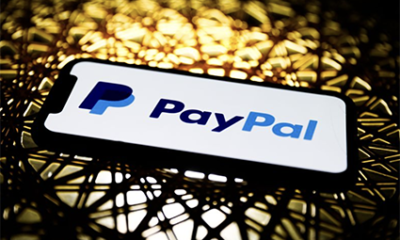Business
Why Marketing Isn’t Just About Marketing
Why most businesses fail to maximise on their marketing, yet do more and more…
Don’t get me wrong, marketing is as crucial for running a business as it is to have an attractive product or service and a solid backend, but many business operators go about it the wrong way.
Why most businesses fail to maximise on their marketing, yet do more and more…
Don’t get me wrong, marketing is as crucial for running a business as it is to have an attractive product or service and a solid backend, but many business operators go about it the wrong way.
Firstly, we all buy and consume products every day that are heavily marketed and yet some operators choose to start marketing once they have made some money. Logic suggests that marketing ought to be implemented as one of the early stage activities rather than once things are starting to go well.
Similarly, in today’s fast-paced, digitised world of communication, we can keep so busy pushing out content on social platforms, writing newsletters, running ads and relying on our funnel, that we can lose track of the important steps of converting our leads, contacts and networks.
Again, if you are not on social media, have electronic communication practices in place, have some processes automated and actively pursue a presence in the digital/online realm, you are taking yourself largely out of the game.
Traditional vs Modern Marketing
If we look back to before the introduction of Facebook, LinkedIn and even the Internet (yes, I do remember a time before the Big Wide Web), people were running businesses and doing so quite successfully. Some of you may think, well, how could they?
Essentially, no matter whether you bake and sell bread, fix cars, provide professional services, help people at home, deliver parcels or run a restaurant – there is a common sentiment and drive among them all. Which is ‘people do business with people’.
Modern day business does not differ much from the traditional. People are still people – and now more than ever, especially in a largely automated, impersonal digital world, we want to be engaged with ‘personally’. This is where most businesses falter and waste too much of their marketing effort – hiding behind their automated emails and social presence or non-presence.
Alternative Marketing Methods
Today, we have a vast array of digital avenues available to reach, communicate and engage with our target audience in addition to traditional means – some of which of course are fading out. The art lies in being able to maximise the impact across all these channels with as little input as possible, yet achieving the intended outcomes.
Advertising, while an effective means of pushing products and brands into the peripherals of the wider population, can sometimes be ineffective and transparent as a marketing strategy. With ads appearing on bus shelters, television, radio and even on our favourite apps and social media platforms, people are overwhelmed with marketing messages on a daily basis.
Therefore, standing out is key – which is why it is worth considering alternative marketing methods for prime audience engagement rather than advertising. Public Relations, for instance, has long been a marketing mix staple, but despite the changing media landscape continues to pick up in popularity and traction in recent years as a viable and effective way to build a brand/service’s credibility and presence to its audience.
With the audience impact three times greater than paid advertising, at a fraction of the cost, Public Relations should be top of mind, or at least in the mix to consider, when working out your marketing strategy for the new year.
Engage, Connect, Convert
Let’s say you are reaching out to your target market with online ads or other communications tactics. You actually reach someone that has a genuine interest in your product or service, they click your link or fill out the form on your website, this is great news and the aim right!
But, what’s next? Yes, the automated ‘thank you’ email goes out, but is expectedly received by your lead with a general understanding that no human has yet done anything toward connecting with them. It’s disheartening, to say the least, for a potential buyer/lead with a general interest in your service or product to not feel a connection with it. It like walking into a store and looking interestedly at a product but being completely ignored by the sales staff.
With the consensus being that people do business with people, leads don’t want to be a number or tally or lists of people to ‘get in contact with’ in the upcoming days or convert themselves after countless automated emails.
Research shows that the average response time to an online inquiry with a phone call or personal outreach takes 46 hours. That is almost two days! And, as we should all know in this fast-paced, consumer-driven world, a lot can happen in two days to divert your lead from buying from your business to obtaining the product or service elsewhere.
Research conducted by InsideSales.com also shows that 78% of leads will convert to sales with the first company to call them back. It really is a case of first in best dressed – so companies need to be proactive with their response rate and management strategies. Following on from this, statistics show that 40% of all leads can wait up to a week to be contacted, and a further 30% are not contacted at all.
Ask yourself, why would you fork out time, money and resources to get your brand noticed and to entice people to your website if you are then under-prepared to actually engage with these leads or do anything other than trust your sales funnel. The answer is simple: you wouldn’t.
Yet, so many businesses fail to implement good response management methods, meaning many leads get generated but then go unnoticed or unreached and unconverted. The report shows that up to 73% of leads are wasted this way. A lot of wasted effort and potential business if you ask me.
In most cases, it’s as simple as picking up the phone and speaking to the lead directly. There are apps and other software available (such as LeadCaller) that let you connect with your leads instantly (some respond in less than 60 seconds from them filling in your form).
Why is this important? Statistics show that the likelihood of reaching and connecting with a lead are 92% times greater if you try to contact them within the first five minutes.
Therefore, it’s vital that you manage these incoming leads accordingly to stay ahead of your competitors and deliver outstanding service – which will, in turn, reflect the efforts and effectiveness of your marketing strategy and is fundamental to gaining the ROI from these.
Marketing is such a prominent aspect of any business profile and heavily impacts the way in which stakeholders perceive and engage with the brand. Think about it – any time you hear or see of a business in the news, on Facebook, on a billboard and posters, or even just word of mouth, it is a direct result of some form of marketing. Therefore, capitalising on this and ensuring your key messaging is reaching your target audience is just one aspect of your strategy. (Lead Generation)
Equally as important is being able to back up your claims by providing exceptional people-to-people service that reflects your key messages and business initiative (lead to sales conversion).
Don’t let your lead to sales response management be the one reason your outcomes aren’t reflecting your marketing efforts.
Those looking to capitalise on their marketing strategy should be looking to employ both traditional and digital marketing strategies (offline/online/social media and Publicity) as well as an efficient lead response management system. Happy marketing and converting!
This article originally appeared in BizCover.com.au by Erik Bigalk, marketing and brand communication expert. www.erikbigalk.com.au
Preneur Magazine is a digital publication covering insight, inspiration and innovation and an online community for entrepreneurs, business owners, start-ups and anyone interested in business, entrepreneurship and enterprise.

























